The sperm whale, also known as the cachalot (Physeter macrocephalus), is the largest toothed whale and one of the most extraordinary animals in the ocean. These deep-sea giants have fascinated humans for centuries, with their impressive size, unique behaviors, and mysterious underwater lives. Here are the 20 amazing sperm whale facts that reveal what makes these incredible creatures so special.

Sperm Whale Facts
1. The Sperm Whale: The Largest Toothed Predator on Earth
Mature males average 16 meters (52 feet) in length but some may grow up to 20.7 meters (68 feet). Males can weigh up to 80 tonnes (79 long tons; 88 short tons).
Females are much smaller, though, males are typically 30% to 50% longer and three times as massive as females. The average length of a female is 12 meters (40 feet).
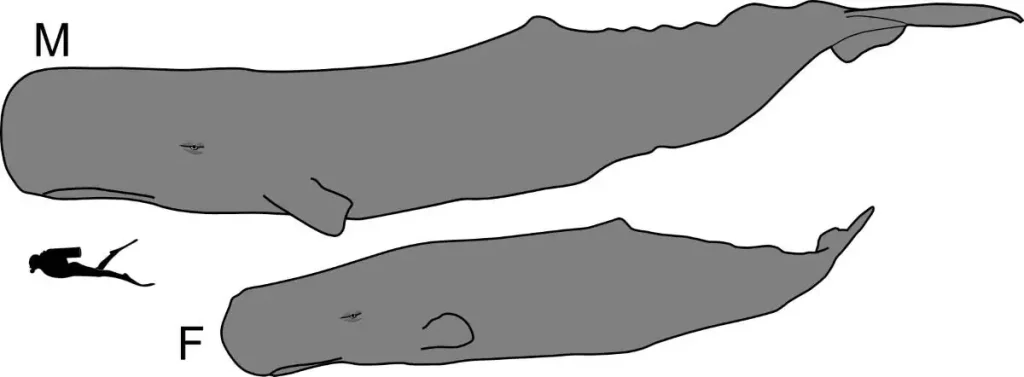
2. They Have the Largest Brains of Any Animal on Earth
With an average weight of about 7.8 kilograms (17 lbs) and a volume of approximately 8,000 cm³, the sperm whale’s brain is the largest of any known modern or extinct animal. Its size is more than three times that of an average adult human brain in volume. Despite its massive size, the sperm whale’s encephalization quotient (EQ) is relatively low, at around 0.3, especially when compared to other mammals such as humans (7.4), dolphins (5.3), dogs (1.2), cats (1.0), horses (0.9), and rats (0.4).
3. Sperm Whale is The Third Deepest-Diving Mammal
After the southern elephant seal and Cuvier’s beaked whale (the deepest diving mammal), the sperm whale is the world’s third deepest diving mammal. They can dive up to 2,250 meters (7,382 feet).
4. They Can Hold Their Breath for Up to Two Hours
Sperm whales can hold their breath for up to two hours, an ability that plays a crucial role in their deep-diving capabilities. This remarkable breath-holding capacity is supported by several physiological adaptations. Their bodies have a high concentration of myoglobin, a protein in muscle tissues that stores oxygen. This allows them to sustain bodily functions during long dives when oxygen levels are low. Additionally, sperm whales can slow their heart rate significantly to reduce oxygen consumption, redirecting blood flow primarily to essential organs like the brain and heart while diving.
Moreover, their lungs are adapted to withstand extreme pressure changes. Sperm whales have flexible rib cages that collapse as they descend, helping to prevent decompression sickness. Their efficient oxygen usage and ability to regulate buoyancy also allow them to reach depths of up to 2,250 meters (7,382 feet) in search of prey like giant squid. These adaptations collectively enable sperm whales to dive deeply and stay submerged for extended periods, making them one of the most adept divers in the animal kingdom
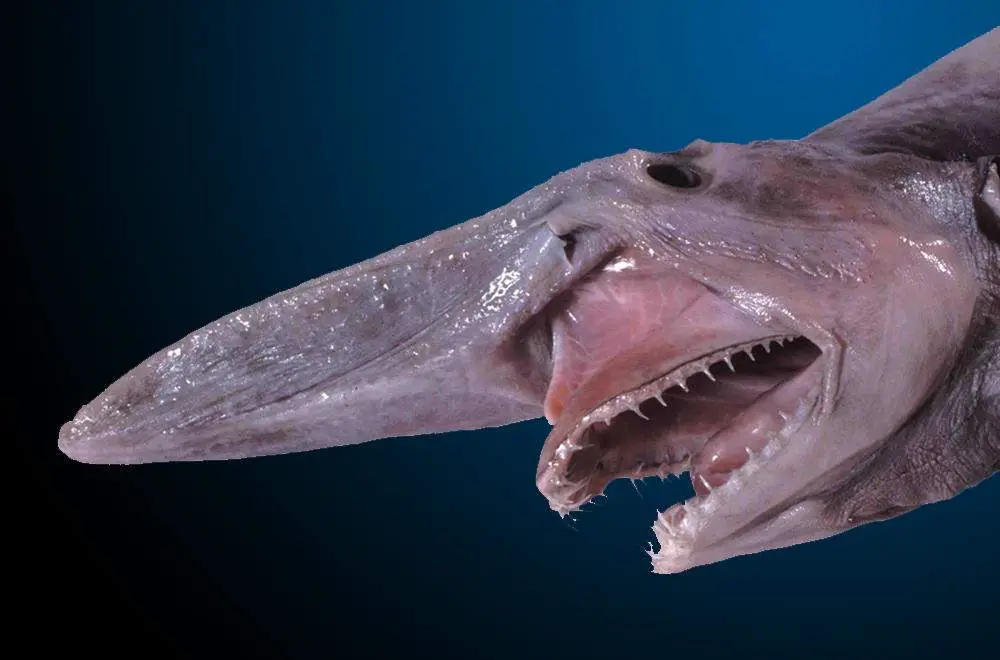
Related: Related: “The Deep Sea” – Life in the Depth of the Oceans
5. Sperm Whale is The Loudest Animal in the World
Yes, the sperm whale (Physeter macrocephalus) is considered the loudest animal on Earth. Sperm whales produce clicks, known as “codas,” that can reach up to 230 decibels. These vocalizations are not only used for communication but also for echolocation, allowing them to navigate and hunt in the dark depths of the ocean. To put their loudness in perspective, their clicks are louder than a jet engine at takeoff and far exceed the threshold for human hearing without protection, which can cause pain at around 120 decibels.
The loudest recorded sound produced by a sperm whale was a single click that reached 235 decibels above the water’s surface! That’s the sound pressure that a Saturn V moon rocket creates at a distance of only 1 meter (3 feet)!
It is even hypothesized that they can stun or even kill their prey using sounds.
The sperm whale’s powerful vocalizations are likely adapted to penetrate the deep ocean waters where visibility is limited, helping them locate prey like giant squid at great depths. The intensity of these sounds makes them the loudest biological noise produced by any animal, surpassing other contenders like blue whales and snapping shrimp.
Their vocal power is not just for volume but also precision, as these clicks can focus in a specific direction, functioning like a biological sonar system. This ability underlines their status as not only the loudest but also one of the most sophisticated acoustic navigators in the animal kingdom.
6. Each Sperm Whale Has a Unique, Distinctive ‘Coda’
When it comes to their vocalizations, sperm whales produce intricate patterns of clicks known as ‘codas.’ These complex sequences are unique to each individual, functioning like an acoustic signature. Scientists believe these codas play a crucial role in social identification, enabling sperm whales to recognize and distinguish one another within their pods.
7. Sperm Whales Are Named After a Misunderstanding of Their Anatomy
The common name of the sperm whale originated in the late 18th and early 19th centuries, during the height of the commercial whaling industry. Early whalers noted the whale’s large head, which led to its alternative name, ‘cachalot,’ derived from the Spanish and Portuguese word for ‘big head.’ Inside this massive head is a fluid-filled organ, known as the spermaceti organ, which whalers called the ‘case.’
During harvesting, whalers discovered that this organ contained a white, waxy substance they mistakenly believed to be the whale’s sperm, giving rise to the name ‘sperm whale.’ The spermaceti organ can hold up to 2,000 liters (530 gallons) of this fluid and can extend through nearly 40 percent of the whale’s body length. Its surrounding structure, also called the case, is remarkably tough and fibrous.
Despite extensive study, the exact function of the spermaceti organ remains uncertain due to the challenges in observing these deep-diving whales. However, several theories exist: it may assist in echolocation by focusing and directing sound waves, help regulate buoyancy during deep dives, or even function as a battering ram and shock absorber during physical encounters.
The waxy oil inside the spermaceti organ has a melting point of 32 degrees Celsius (89.6 degrees Fahrenheit). By regulating blood flow to this organ, and thus its temperature, the whale may be able to control whether the waxy substance remains in a liquid or solid state. When the wax solidifies, it contracts and becomes denser, allowing the whale to sink more effectively. Conversely, when the wax is heated and returns to a liquid state, it expands, making the whale less dense and more buoyant. This mechanism could help sperm whales manage their buoyancy, aiding in their deep dives and controlled ascents.
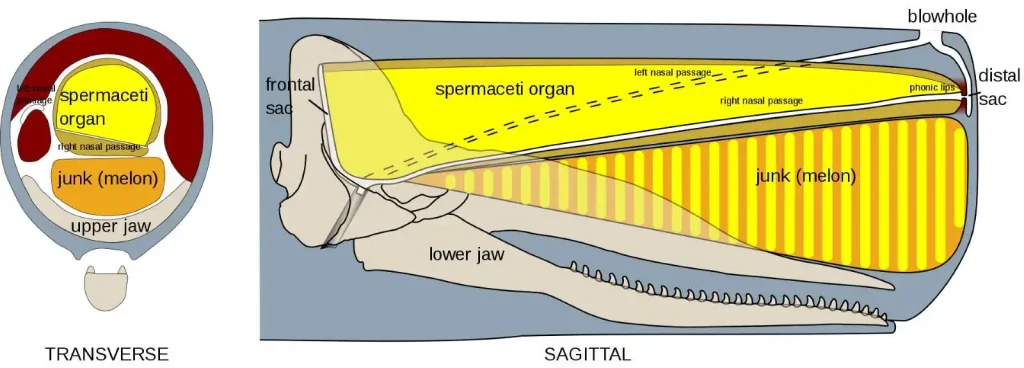
Whalers hunted sperm whales primarily for the valuable oil found in the spermaceti organ, which was used in various commercial products, including lamp oil, soaps, and cosmetics. Another prized product was ambergris, a solid, waxy, and flammable substance produced in the digestive system of sperm whales. This substance, typically grey or blackish, was highly valued by perfumers as a fixative to make scents last longer (see the bonus fact below). Fortunately, modern perfumery has largely replaced ambergris with synthetic alternatives like ambroxide, commonly known under the brand name Ambroxan.
8. They Have the Largest Head of Any Animal on Earth
Their heads can make up as much as 35% of their total body length, giving them the largest head of any animal on Earth. This massive structure not only houses the spermaceti organ, a crucial component for buoyancy control and echolocation but also supports their powerful jaws. Such a head size is essential for their survival, allowing them to hunt deep-sea prey like giant squid, and reflects an extraordinary evolutionary adaptation among marine mammals.

9. They Have Attacked and Sunk Ships Throughout History
Historically, sperm whales have been known to attack and sink whaling ships. The most famous cases involve the American whaling vessels Essex (sunk in 1820) and Ann Alexander (sunk in 1851). The Essex was struck thousands of kilometers from the nearest shore, and its crew was left stranded in the open ocean. Using the ship’s remaining whaleboats, the survivors attempted to navigate to safety, but they faced extreme starvation and dehydration. In a desperate bid for survival, they resorted to cannibalism, consuming the bodies of their deceased crewmates.
Of the 20 men originally aboard the Essex, only eight survived to be rescued. The harrowing ordeal became well-known and ultimately inspired Herman Melville (1819-1891) to write his 1851 classic novel Moby-Dick. Melville’s work immortalized the story of the Essex, blending fact and fiction to create one of the most famous tales of maritime adventure and the dangers of whaling.
10. Melville’s Moby-Dick Was Partially Inspired by a Real Sperm Whale Named Mocha Dick

Moby Dick, the infamous white whale in Herman Melville’s 1851 novel Moby-Dick, was partly inspired by a real-life sperm whale known as Mocha Dick. An albino whale, like Melville’s creation, Mocha Dick was a well-known menace to whalers in the early 19th century. Named after the waters off Mocha Island near Chile where he was frequently sighted, Mocha Dick was described as a giant, battle-scarred whale with an unusual white appearance.
Mocha Dick survived numerous encounters with whaling ships, reportedly attacking them when provoked or when defending other whales. His reputation as a fierce and intelligent adversary grew, and he became a legend among whalers. Estimates suggest he survived over 100 skirmishes before he was finally killed in 1838. The stories of his resilience, along with his striking white coloration, caught Melville’s attention and inspired parts of his novel, which explores themes of obsession, revenge, and the unpredictable power of nature.
Melville’s Moby-Dick blends the tales of Mocha Dick with the tragic sinking of the whaling ship Essex, combining fact and fiction to create one of the most enduring maritime adventures in literature. Mocha Dick’s legacy, as both a real and symbolic figure, continues to captivate readers and historians alike.
11. Sperm Whales Possess the Largest Teeth of Any Whale
The sperm whale’s cone-shaped teeth are remarkably large, measuring between 10 and 20 cm (3.94-7.88 inches) in length and weighing up to 1 kilogram (2.2 pounds) each. These teeth, numbering between 18 to 26 on each side of the lower jaw, fit neatly into sockets in the upper jaw, giving the whale a powerful grip when hunting prey like giant squid.
Unlike other toothed whales, sperm whales primarily use their teeth for combat and grasping prey rather than chewing, as they typically swallow their food whole. Interestingly, scientists use the teeth to determine a sperm whale’s age, as each tooth accumulates layers of cementum and dentine over time, similar to the growth rings seen in trees. By counting these layers, researchers can estimate the whale’s age with reasonable accuracy. This method has proven invaluable in studying the life history and population dynamics of these deep-diving giants.
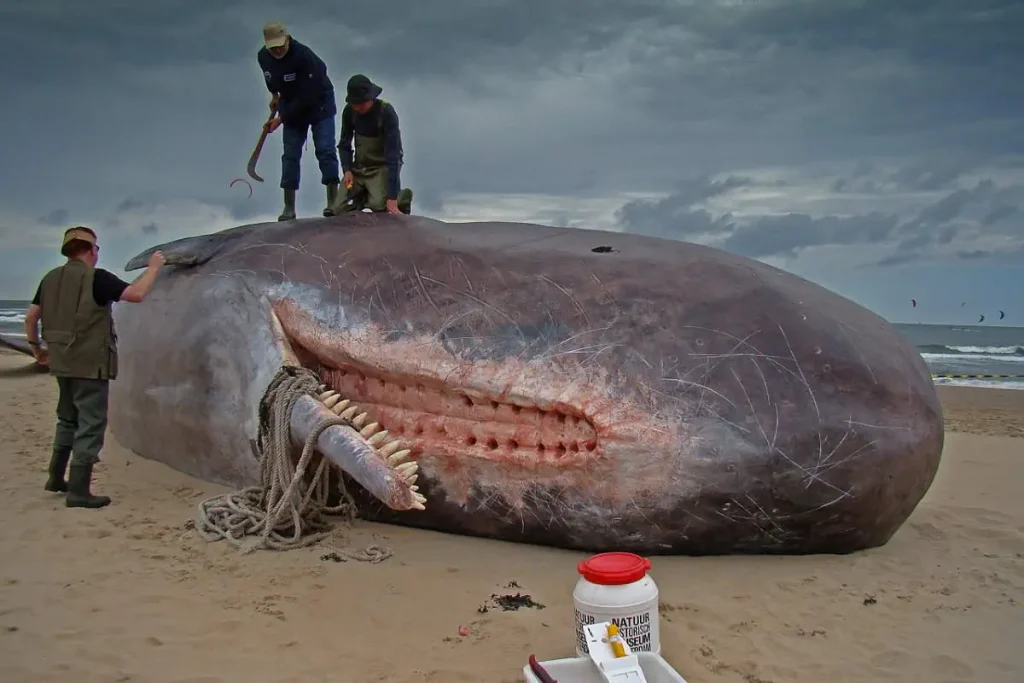
12. Sperm Whales Have a Distinctive Blow
The blow of a sperm whale is unique, being directed forward and to the left, and it can reach up to 5 meters (16 feet) in height. This distinctive diagonal angle, unlike the vertical blow of other whales, is due to the positioning of the blowhole on the left side of their massive head.
This characteristic allows for easy identification of sperm whales, even from a considerable distance, especially on calm days when there is little wind. Spotters and researchers often rely on this feature to distinguish sperm whales from other species at sea.
13. They Feed Continuously to Sustain Their Massive Size
Sperm whales are continuous feeders, consuming around 3% of their body weight each day – sometimes up to 2 tons of food! Their diet primarily consists of squid, including giant and colossal squid, which they hunt in the deep ocean, often diving as far as 2,250 meters (7,382 feet) below the surface. Sperm whales use echolocation to navigate these dark depths and locate their prey. Once they detect prey, they use their powerful jaws and cone-shaped teeth to capture it.
In addition to squid, sperm whales also eat fish and occasionally other marine creatures, depending on the availability of these prey in their habitat. To support their massive energy requirements, these deep-sea giants must spend a significant amount of their time foraging. Studies have shown that sperm whales can dive for over an hour in search of food, but they also take short breaks to rest and replenish oxygen levels before resuming their hunt.
Given the immense size of adult males, which can weigh up to 45 tons, the need for such a large daily intake of food is crucial to maintaining their energy levels and overall health.
14. Sperm Whales Consume Less Seafood Annually Than Humans Do
Despite their massive size and appetite, the total annual food consumption of sperm whales worldwide is estimated at around 91 million tonnes for a population of approximately 300,000 to 450,000 individuals. By contrast, humans, with a global population exceeding 7.8 billion, consume an estimated 115 million tonnes of seafood annually. While sperm whales are the largest toothed predators on Earth, their collective impact on marine resources is relatively small compared to that of humans. This comparison highlights the immense scale of human consumption and its potential impact on marine ecosystems, particularly as global demand for seafood continues to rise.
15. Their Prey Includes One of the World’s Largest Fish: the Megamouth Shark
Sperm whales have a diverse diet that includes several deep-sea species such as giant squid, colossal squid, octopuses, and various types of fish. Their ability to dive to extreme depths allows them to hunt these elusive creatures in the dark, deep ocean.
Some evidence suggests that sperm whales may also prey on the megamouth shark, one of the largest and most mysterious fish species in the world’s oceans. The megamouth shark, which can grow up to 18 feet (5.49 meters) in length, inhabits the deep waters that sperm whales often explore, making it a potential target. Researchers are still studying these interactions, as sperm whales’ feeding habits play a crucial role in understanding deep-sea ecosystems and predator-prey dynamics in the ocean’s depths.
16. All Living Sperm Whales May Have Descended from a Single Ancestral Female
According to a study published in the journal Molecular Ecology, all living sperm whales appear to be descendants of a single female ancestor that lived approximately 80,000 years ago. Researchers analyzed the mitochondrial DNA (mtDNA) of around 1,600 sperm whales from various populations worldwide. Mitochondrial DNA, which is passed down exclusively from mother to offspring, showed striking similarities among all sampled whales, tracing back to this single ‘grandmother.’
This discovery suggests that at some point in the distant past, the sperm whale population might have gone through a genetic bottleneck, reducing genetic diversity and resulting in all current populations sharing a common maternal lineage. The cause of this bottleneck could have been a significant environmental event or a shift in ocean conditions that drastically reduced the sperm whale population before it rebounded and expanded. Such genetic insights are crucial for understanding the evolutionary history and resilience of these deep-sea giants.
17. Sperm Whales Are Highly Social and Live in Complex Groups
Sperm whales are highly social creatures that live in complex, matriarchal groups called pods, consisting primarily of females and their calves. These groups usually contain about 15 to 20 individuals, although they can merge with other pods to form much larger temporary gatherings known as “super-pods.” Within these groups, members work together to protect their young against predators like orcas or great white sharks and coordinate deep dives for feeding.

Communication is a vital aspect of their social behavior. As explained above, sperm whales use a series of clicks, known as “codas,” to interact with one another. These vocalizations vary between different pods, indicating that they may serve as a form of dialect or identity, helping individuals recognize members of their group.
Males typically leave their natal pods when they reach maturity, forming loose associations with other males, known as “bachelor groups,” or becoming solitary. These males may travel thousands of miles and join female pods temporarily during breeding seasons.
This social structure, especially among females, plays a crucial role in calf-rearing and protection. When one female dives for food, others remain close to the surface to care for and protect the calves, ensuring their survival. Such cooperative behaviors illustrate the sophisticated and interconnected nature of sperm whale societies.
18. They Exhibit Significant Sexual Dimorphism
Sperm whales exhibit pronounced sexual dimorphism, which refers to the differences in characteristics between males and females of the same species. In sperm whales, males are significantly larger than females, reaching lengths of up to 20.7 meters (68 feet) and weights of around 57,000 kilograms (125,000 pounds), up to 80 tonnes, while females typically measure about 11 meters (36 feet) and weigh around 15,000 kilograms (33,000 pounds). This size disparity is among the most significant in the whale family, reflecting their different roles in the species’ social structure and reproductive strategies.
In addition to size differences, sperm whales also display variations in behavior. Males often lead solitary lives or form loose bachelor groups, whereas females typically live in stable, matriarchal pods that include their offspring. The social structure is designed to protect calves from predators and ensure cooperative care and nurturing.
Furthermore, males engage in fierce competition for mates, which can lead to aggressive behavior and confrontations with other males. This behavior contrasts with the nurturing role of females, who focus on rearing their young.
Such differences not only highlight the adaptability of sperm whales to their environments but also offer insights into their evolutionary strategies. Understanding these distinctions can help researchers in conservation efforts and in studying the behavioral ecology of marine mammals.
19. Sperm Whales Don’t Sleep Much, and Sometimes They Sleep Vertically!
Sperm whales exhibit fascinating and complex sleeping behaviors. While they are known for their distinctive vertical sleeping position, where they drift just below the water’s surface, they also sleep horizontally near the surface. This vertical posture allows them to easily access oxygen while remaining alert to potential threats. Typically, sperm whales sleep in short intervals of about 10 to 15 minutes and remain motionless during these periods, often without taking a breath.
Interestingly, this unique sleeping behavior was first scientifically documented in 2008, highlighting the adaptations that sperm whales have developed in their marine environment. Research indicates that when they enter a deep sleep state, their muscles relax, allowing them to remain suspended in the water column. Although they can hold their breath for extended periods, they take advantage of their vertical position to facilitate quick access to air when they resurface.
20. Sperm Whales Have Impressive Lifespans
Sperm whales can live for 70 years or more, with some individuals reaching remarkable ages. Females typically become fertile around the age of 9, and the oldest recorded pregnant female was 41 years old, highlighting the extended reproductive potential of these mammals.
Lactation in sperm whales lasts between 19 to 42 months, during which mothers provide essential nutrition to their calves. Interestingly, while it is rare, some calves may continue to suckle for as long as 13 years. This extended nursing period reflects the significant investment sperm whale mothers make in raising their young, ensuring they have ample time to develop the skills needed for survival in the ocean.
Bonus Fact: Sperm Whale Poop is Worth More than Gold!
The giant squid (Architeuthis dux), colossal squid (Mesonychoteuthis hamiltoni), and other squid species comprise approximately 80 percent of the sperm whale’s diet. These deep-sea predators hunt effectively for their squid prey, consuming significant quantities in the process.
As the whale digests these squids, indigestible parts such as beaks, pens, and eyelids accumulate in its digestive system. Normally, the whale can expel these indigestible materials either by vomiting or defecating. However, in rare instances, these materials, along with parasitic worms and fecal matter, can clump together, forming a larger mass. This mass can grow over time, leading to potential health issues for the whale. If it becomes too large, it may either be defecated out or, unfortunately, rupture the whale’s colon, leading to a fatal outcome.
Once expelled, this clump floats on the ocean’s surface for years. During this time, it undergoes a transformation influenced by sunlight, saltwater, and bacteria, ultimately becoming ambergris—a substance known for its sweet scent.
Ambergris is highly prized in the perfume industry as a fixative, enhancing the longevity of fragrances. Due to its rarity and unique properties, it can be worth more than gold, making it one of the most sought-after materials in perfumery.
Sperm Whale Conservation Status
Sperm whales are classified as vulnerable by the International Union for Conservation of Nature (IUCN) and are listed as endangered under the United States Endangered Species Act. Currently, the greatest threats to their population include entanglement in fishing nets and collisions with ships. Additionally, marine debris, ocean noise, and chemical pollution pose significant risks to their well-being and habitat.
Despite these challenges, sperm whales are gradually recovering from the devastating impacts of centuries of commercial whaling. It is estimated that the current population numbers a few hundred thousand individuals. Historically, whaling has not only endangered sperm whales but has also contributed to climate change by decreasing their numbers.
Each year, it is estimated that whaling has resulted in an additional 2 million tonnes of carbon remaining in the atmosphere, due to the loss of these large marine mammals, which play a role in carbon sequestration.
Sources
- Sperm Whale on Wikipedia
- How Did the Sperm Whale Get Its Name? on the Britannica website
- Mocha Dick on Wikipedia
- “Could a Whale Accidentally Swallow You? It Is Possible” on the Smithsonian Magazine website
- “Mocha Dick: The Real-Life Whale That Gave Moby Dick His Name” on the Smithsonian Magazine website
- “7 Facts About Sperm Whales” on the National Wildlife Federation blog
- “Sperm Whale Facts” on the Cool Antarctica website
- Sperm Whale on the Oceana website
- Sperm Whale on the NOAA Fisheries website
- “Every Sperm Whale Alive Today May Have Descended From the Same Female” on the Smithsonian Magazine website
- Video by Hashem Al-Ghaili: “Sperm Whales have the biggest mammalian brain on Earth” on Facebook
- How Many Elephants are Left in the World in 2025? - August 17, 2025
- Moon Landings: All-Time List [1966-2025] - February 2, 2025
- What Is Max-Q and Why Is It Important During Rocket Launches? - January 16, 2025


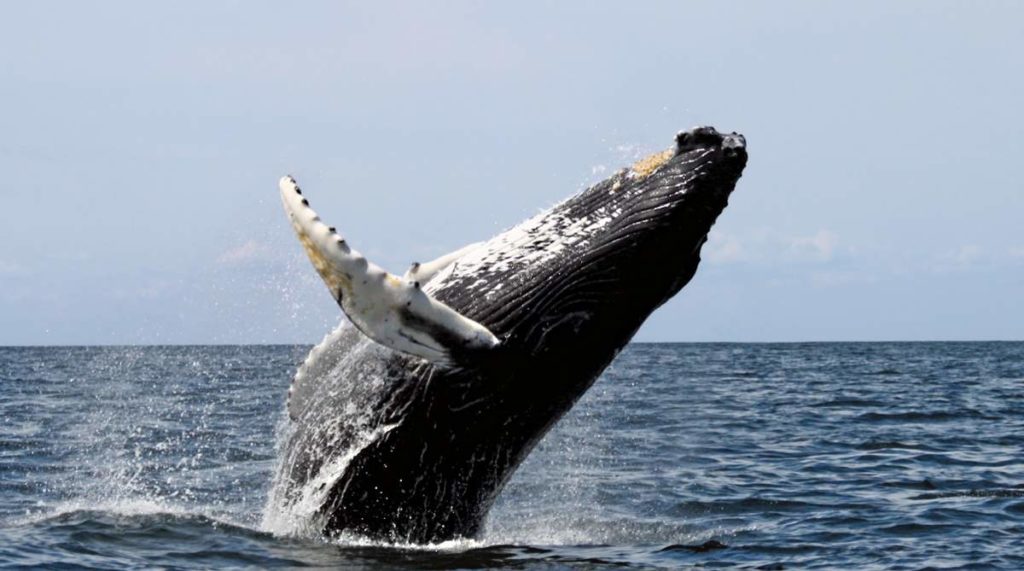
2 replies on “20 Amazing Sperm Whale Facts”
a few typos for https://ourplnt.com/sperm-whale-facts/#google_vignette (20 Amazing Facts on Sperm Whales)
end of article … Heading: Sperm Whale conversation status
you meant conservation (you transposed the v and s)
Heading – Bonus fact: sperm whale poop worth more than gold!
The last line reads … It even worths more than gold! I believe you meant … It’s even worth more than gold!
Heading … They attacked and sunk ships in history
This line in this section reads …In history, sperm whales attacked and some whaler ships.
You are missing the word “sunk” (sunk some whaler ships)
This was an interesting article that I used with my 5th grade students when studying whales. Thank you!
Many thanks, Mary! Fixed.